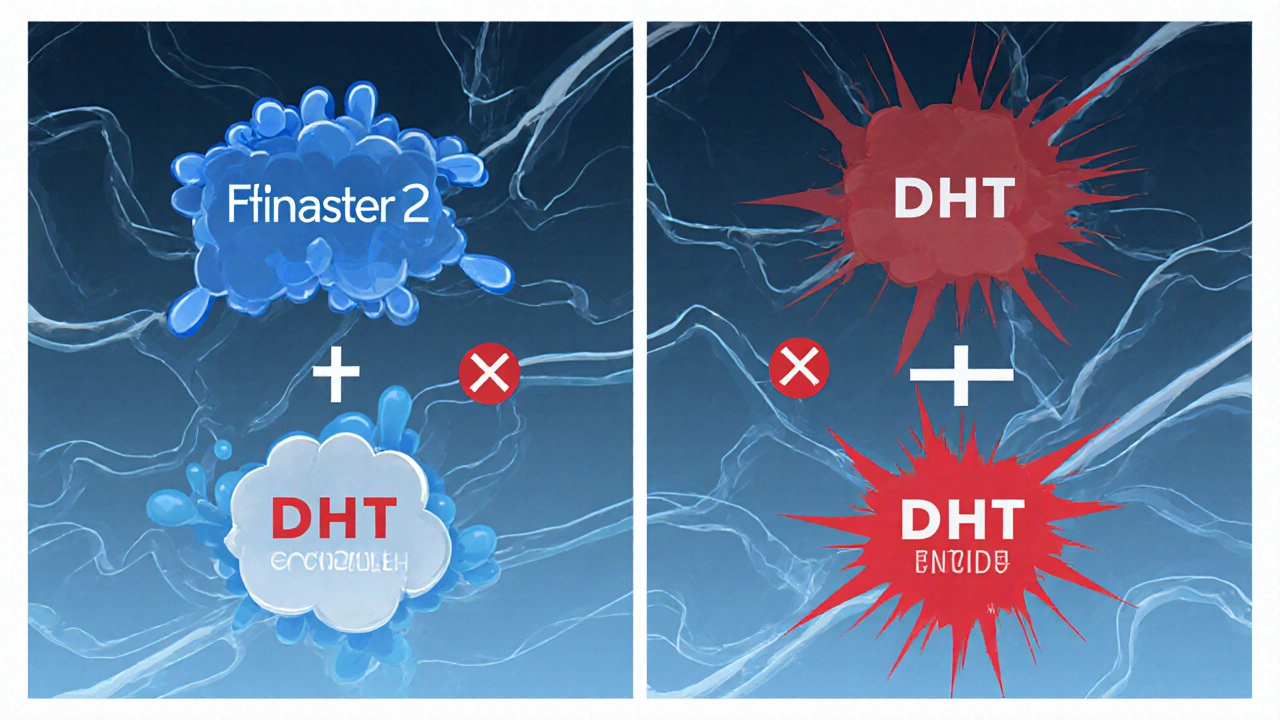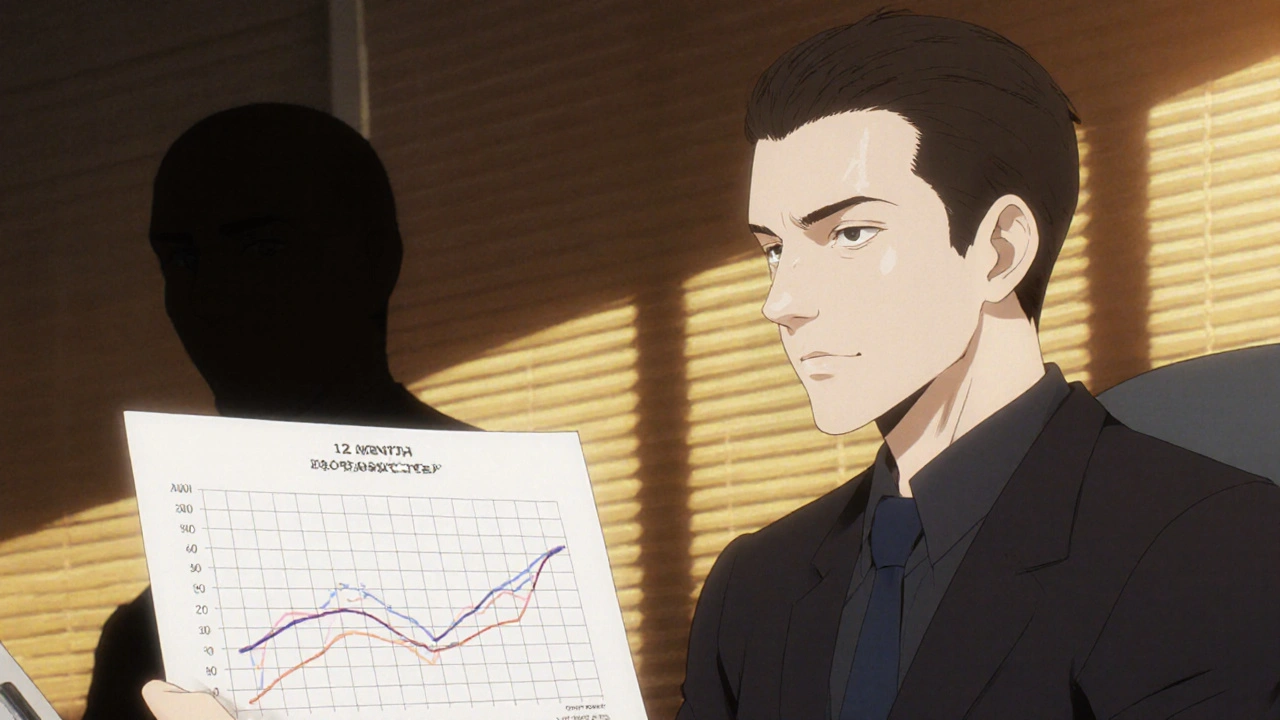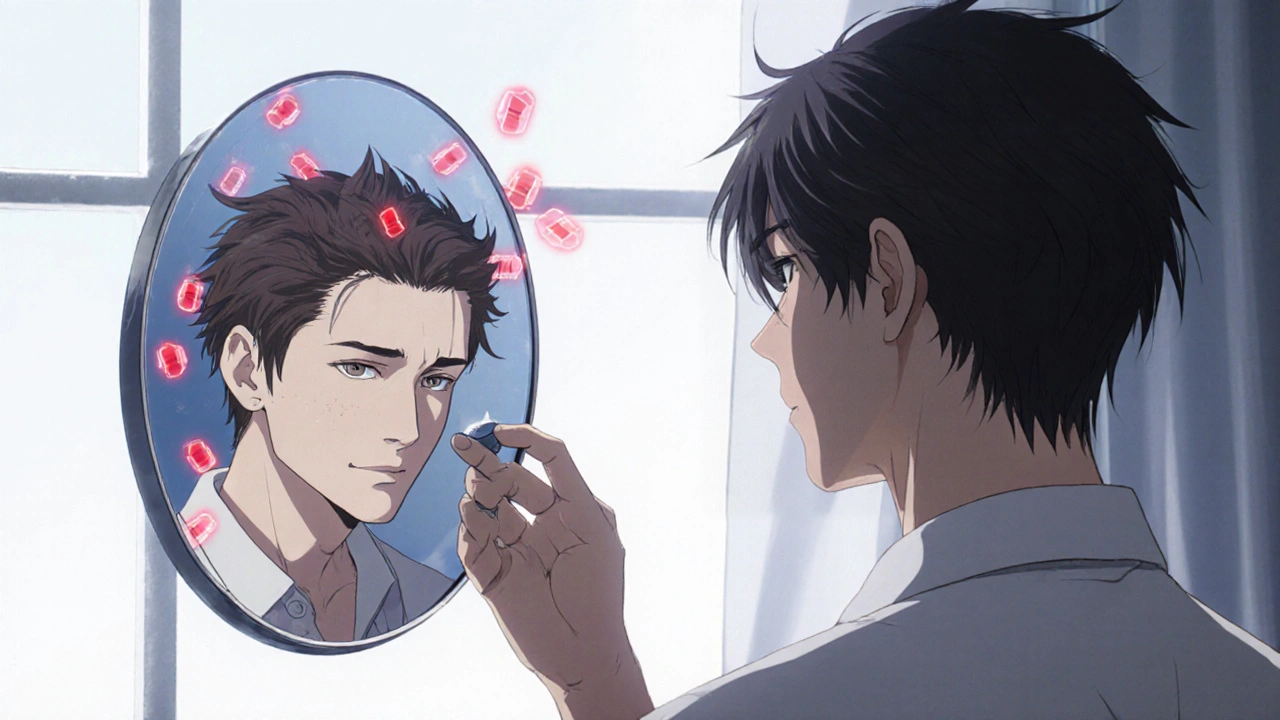If you’ve heard about dutasteride for hair loss or an enlarged prostate, you might be wondering: what exactly is it, and how does it actually work? It’s not a magic pill, but it’s one of the most effective medications for certain conditions - if used correctly. Unlike over-the-counter supplements, dutasteride is a prescription drug with real, measurable effects on hormones in your body. And understanding how it works helps you know what to expect - and what to watch out for.
What is dutasteride?
Dutasteride is a medication that belongs to a class called 5-alpha reductase inhibitors. It was first approved by the FDA in 2001 for treating benign prostatic hyperplasia (BPH), which is when the prostate gland grows larger and causes trouble with urination. Later, doctors started using it off-label for male pattern hair loss - and it became one of the most talked-about treatments in the field.
It’s sold under the brand name Avodart, but generic versions are widely available. The pill comes in 0.5 mg capsules, taken once a day. Unlike some treatments you might see online, dutasteride doesn’t just mask symptoms - it changes the underlying biology. That’s why it works for some people when other things don’t.
How does dutasteride work?
To understand dutasteride, you need to know about DHT - dihydrotestosterone. DHT is a hormone made from testosterone. It’s perfectly normal in small amounts, but in men genetically prone to hair loss or prostate enlargement, too much DHT causes problems.
Here’s the simple version: your body uses an enzyme called 5-alpha reductase to turn testosterone into DHT. There are two types of this enzyme - type 1 and type 2. Finasteride, another common drug, only blocks type 2. Dutasteride blocks both. That means it cuts DHT levels by about 90% in the blood and up to 98% in the prostate. That’s a big difference.
When DHT drops, it stops shrinking hair follicles on the scalp. That’s why hair loss slows down - and in many cases, hair starts to regrow. In the prostate, less DHT means the gland doesn’t grow as large, which reduces pressure on the urethra and improves urine flow.
It’s not instant. Most men don’t see results for at least three to six months. Some need a year to notice real changes. But if you stick with it, the effects are often strong and lasting.
Dutasteride for hair loss: what to expect
For hair loss, dutasteride isn’t FDA-approved - but it’s used off-label by dermatologists and hair specialists around the world, including in Australia. Clinical trials show that about 70% of men using dutasteride for hair loss see improvement after one year. That’s higher than finasteride, which helps about 60%.
What does improvement look like? It’s not usually a full head of thick hair again. More often, it’s a stop in thinning, some regrowth along the hairline or crown, and less shedding when you wash or brush your hair. The best results come when you start early - before the follicles die completely.
One study published in the Journal of the American Academy of Dermatology in 2019 followed 1,000 men using dutasteride for hair loss over two years. Nearly 85% reported they were satisfied with their results. But here’s the catch: if you stop taking it, DHT levels rise again, and hair loss returns within 6 to 12 months.

Dutasteride vs finasteride: what’s the difference?
Many people compare dutasteride and finasteride because they’re both used for hair loss and prostate issues. Here’s how they stack up:
| Feature | Dutasteride | Finasteride |
|---|---|---|
| Enzymes blocked | Type 1 and Type 2 | Type 2 only |
| DHT reduction | Up to 90-98% | About 70% |
| Half-life in body | 5 weeks | 6-8 hours |
| Time to see results | 3-12 months | 3-6 months |
| Approved for hair loss? | No (off-label) | Yes (FDA-approved) |
| Typical dose | 0.5 mg daily | 1 mg daily |
Because dutasteride stays in your system longer, you might think it’s better. But that also means side effects can last longer if they happen. Finasteride leaves your body faster, so if you have an issue, it clears quicker. Many men start with finasteride because it’s approved for hair loss and has a longer safety record. But if finasteride doesn’t work well enough, dutasteride is a common next step.
Side effects and risks
Like any medication, dutasteride isn’t risk-free. The most common side effects are sexual: reduced libido, trouble getting or keeping an erection, and lower semen volume. These happen in about 5-10% of users. For most, they improve or go away after a few months. But for a small number - less than 2% - they persist even after stopping the drug. This is called post-finasteride syndrome, and while rare, it’s real.
Other possible side effects include breast tenderness or enlargement, depression, and allergic reactions like rash or swelling. If you notice any of these, talk to your doctor. Don’t just stop the pill without guidance - your body needs time to adjust.
It’s also important to know: dutasteride can harm a developing male fetus. If you’re taking it, your partner shouldn’t become pregnant. Women who are pregnant or planning to be should never handle broken capsules. Even a tiny amount of the drug can affect a baby’s genital development.

Who should not take dutasteride?
Dutasteride is not for everyone. You should avoid it if:
- You’re a woman - especially if pregnant or planning pregnancy
- You’re under 18 - safety hasn’t been studied in teens
- You have severe liver disease - your body can’t process it properly
- You’re allergic to dutasteride or similar drugs
- You’re taking certain medications like ketoconazole or ritonavir - they can interact dangerously
Always tell your doctor about all your health conditions and any other medicines or supplements you take. Some herbal products - like saw palmetto - are sometimes used for prostate health, but combining them with dutasteride can increase side effects without proven benefit.
Is dutasteride worth it?
There’s no one-size-fits-all answer. For men with early-stage hair loss and a strong family history, dutasteride can be life-changing. It stops the progression, and for many, brings back noticeable thickness. For men with BPH, it can mean fewer bathroom trips at night and less discomfort.
But it’s not a quick fix. It requires patience, consistency, and a willingness to accept potential side effects. If you’re looking for a miracle cure, you’ll be disappointed. But if you’re looking for a science-backed treatment that actually changes the course of hair loss or prostate growth - then yes, it’s worth considering.
Start with a consultation. Get your hormone levels checked. Talk to a dermatologist or urologist who’s experienced with these treatments. Don’t buy it online without a prescription - counterfeit versions are common, and dosing errors can be dangerous.
Dutasteride works because it targets the root cause - not the symptom. That’s why it’s powerful. But power means responsibility. Use it wisely, under medical supervision, and with clear expectations.
Can dutasteride cause permanent side effects?
In rare cases, some men report ongoing sexual side effects - like low libido or erectile dysfunction - even after stopping dutasteride. This is sometimes called post-finasteride syndrome, though it’s not officially recognized by all medical groups. The risk is low (less than 2%), but real. If you experience persistent issues, consult a specialist. There’s no guaranteed cure, but some men improve with time, therapy, or hormone support.
How long does it take for dutasteride to work for hair loss?
Most men don’t see results until 3 to 6 months. Maximum benefit usually takes 12 to 18 months. Early signs include less shedding and finer hairs becoming thicker. Don’t give up before six months - it’s too soon to judge.
Can I take dutasteride with other hair loss treatments?
Yes, many men combine dutasteride with minoxidil (Rogaine) for better results. Minoxidil boosts blood flow to the scalp, while dutasteride reduces DHT. Together, they work on different pathways. Some also use low-level laser therapy or platelet-rich plasma. Always check with your doctor before combining treatments.
Is dutasteride safe for long-term use?
Studies show dutasteride is safe for long-term use in men with BPH - some have taken it for over 10 years with no major new risks. For hair loss, long-term data is more limited, but no major safety signals have emerged. Regular check-ups with your doctor are still recommended, especially if you’re over 50 or have other health conditions.
Will dutasteride make me infertile?
It can reduce semen volume and sperm count temporarily, but most men return to normal fertility after stopping the drug. If you’re planning to have children, talk to your doctor. Some men choose to stop dutasteride for 3-6 months before trying to conceive. Sperm quality usually recovers fully in that time.
If you’re considering dutasteride, the key is balance. It’s not a miracle, but it’s one of the most effective tools we have. Understand how it works, know the risks, and work with a doctor who knows your full health picture. That’s how you get results - safely and sustainably.


Graham Holborn
Hi, I'm Caspian Osterholm, a pharmaceutical expert with a passion for writing about medication and diseases. Through years of experience in the industry, I've developed a comprehensive understanding of various medications and their impact on health. I enjoy researching and sharing my knowledge with others, aiming to inform and educate people on the importance of pharmaceuticals in managing and treating different health conditions. My ultimate goal is to help people make informed decisions about their health and well-being.